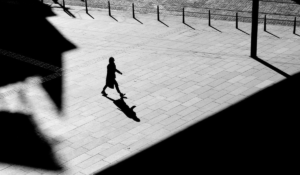Is Diffused Light the Same as Soft Light? Debunking Common Misconceptions

“Soft light” and “diffused light” are terms often interchanged among photographers and cinematographers, but are they really interchangeable? Here we will examine the nuances of these lighting concepts, debunking misconceptions and clarifying their differences.
A distinction between diffused and soft light
In reality, soft light and diffused light are two different aspects of lighting. As a result of a smooth transition between shadows and highlights, soft light creates a flattering illumination and reduces contrast. By enlarging the light source, diffused light minimizes harsh shadows and achieves an even distribution of light across a surface.
Soft vs. hard light characteristics
The shadows and highlights of hard light are sharp and well defined because it originates from small light sources. A dramatic contrast is often used in high-impact imagery. Compared to soft light, which emanates from large light sources, soft light produces gentle shadow transitions and flattering illumination.
Diffusion of ideas
Diffusion plays an important role in modifying light sources to achieve desired lighting effects. With diffusion, light is spread over a larger area, reducing harsh shadows and hotspots. Using this technique, you can create a natural, flattering light that enhances the appearance of the subject.
Reflections versus specular light
Differentiating specular reflections from specular light is crucial. A specular reflection is a direct reflection observed as bright highlights with high contrast. There is no such thing as specular light, only specular reflections caused by specific angles of light hitting surfaces.
Examples and challenges in practice
In these examples, hard specular light is illustrated, hard diffused light is illustrated, and soft diffused light is illustrated. Light quality and shadow characteristics are demonstrated by these examples. In spite of this, achieving soft specular light presents challenges due to the ineffectiveness of traditional modifiers such as softboxes.
Light Quality: Understanding its Importance
Photographers and cinematographers can create specific moods and effects in their images by understanding the differences between soft and diffused light. As a result, they are able to make informed decisions about lighting equipment and modifiers, ensuring that their creative vision is met.
Diffusion Considerations
Adding multiple layers of diffusion may not necessarily improve softness, and photographers should exercise restraint to prevent diminishing light power without improving softness significantly. To control light spread and achieve desired effects, diffusion materials and grids must be placed properly.
Conclusions
Photographers and cinematographers need to understand the nuances of light quality to realize their creative visions. Through controlled and intentional lighting techniques, practitioners can elevate their craft, produce more nuanced imagery, and communicate their artistic vision more effectively.
The distinction between soft and diffused light, although often coexisting, enhances practitioners’ ability to manipulate light effectively, resulting in visually compelling results.



